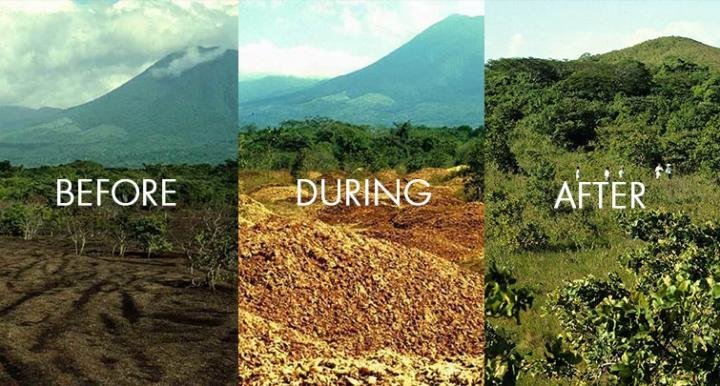Rain forests are essential to human life and this is because they are the main source of oxygen for our planet. But because of constant abuse from mankind with activities like illegal logging and deforestation, our climate is gravely affected. So you might be wondering, how did a bunch of orange peels save an entire rainforest?
In 1997, Del Oro, a juice company dumped about 12,000 metric tons of orange peels on a barren land in Costa Rica’s National Park. 16 years later, the space turned into a lush forest filled with vines and other greenery.
Was This an Accident?
Contrary to what people might think, this was no accident. In fact, it was very well thought of. (Source: Science Alert)
In 1997, two ecologists from the University of Pennsylvania and Del Oro, a new fruit juice company from Costa Rica partnered up for an experimental project. The company owned a piece of land that was just by the border of the Guanacaste Conservation Area. In exchange for more space, Del Oro signed a deal that they be allowed to dump their agricultural waste in some areas in the park. (Source: Bored Panda)
Del Oro did not use any chemicals or insecticides on their produce and the agreement allowed the disposal of only a certain kind of agricultural waste – orange peels and pulp. (Source: Bored Panda)
The waste were only meant to be dumped on soil with poor quality, and will be closely monitored by the waste system management of the company. (Source: Bored Panda)
What was the Citizen’s Reaction to This Deal?
Not everyone was pleased with the arrangement. Del Oro’s rival, TicoFrut sued the company for dumping dangerous waste of rotting peels that attracts tons of flies. Turns out, TicoFrut had been having issues with their waste management system and had been forced to overhaul their own processing facility. (Source: Bored Panda)
What others failed to understand is that this arrangement was more of an ecological experiment rather than a corporation trying to get away with dumping their waste. (Source: Bored Panda)
What Happened to the Lawsuit?
Even with empirical evidence provided by several environmental groups that the experiment was ecologically safe, the Costa Rican Supreme Court shut down the whole study. (Source: Bored Panda)
At this point there were already 12,000 metric tons of orange peels and pulp in three hectares of land. When the courts shut down the experiment, the peels were left behind. (Source: Science Alert)
16 Years Later…
In 2013, a graduate student from Princeton University by the name of Timothy Treuer was looking for topics to study on and was able to connect with one of the original authors of the research with the Del Oro company. He decided to do a follow-up study on the effects of the peels that had been left at the national park. (Source: Science Alert)
Treuer said “It was so completely overgrown with trees and vines that I couldn’t even see the 7-foot-long sign with bright yellow lettering marking the site that was only a few feet from the road, “I knew we needed to come up with some really robust metrics to quantify exactly what was happening and to back up this eye-test, which was showing up at this place and realizing visually how stunning the difference was between fertilized and unfertilized areas.” (Source: Bored Panda)
Treuer came back to Costa Rica in 2014 with a full team of scientists to study the lush forest. One of the main observations were; that the peels had completely transformed the land’s soil quality. The soil turned from a dry lifeless state, to a rich and loam-like mixture. (Source: Scientific American)
With the proper management of agricultural waste, there can be lots of success stories like this.
